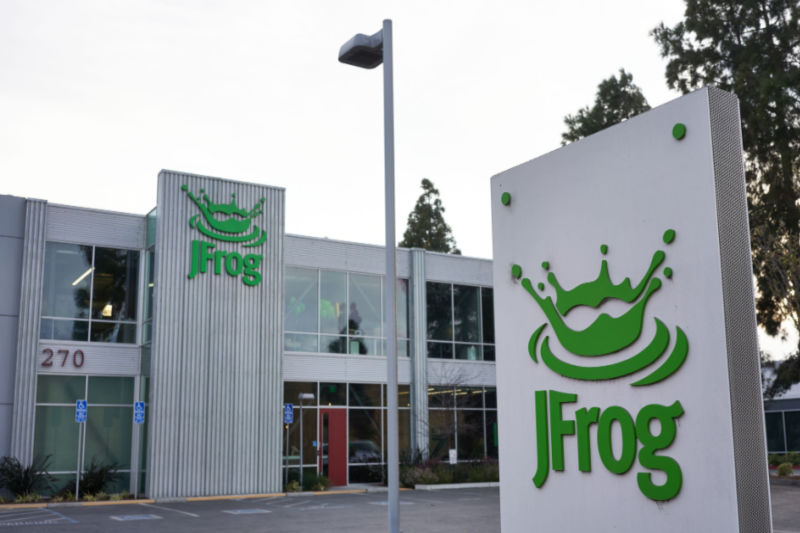Stock market today: S&P 500 drops for fifth day as focus shifts to Powell’s speech
Introduction & Market Context
JFrog Ltd (NASDAQ:FROG) shares jumped 16.65% in premarket trading following the company’s Q2 2025 earnings release and presentation, which showcased accelerating growth and strategic expansion into artificial intelligence and machine learning operations (MLOps). The DevOps platform provider reported $127.2 million in quarterly revenue, continuing its streak of consistent growth while improving key metrics including customer retention and multi-product adoption.
The company’s stock, which closed at $38.79 before the announcement, reached $45.25 in premarket trading, approaching its 52-week high of $45.99. This positive market reaction reflects investor confidence in JFrog’s execution and strategic direction, particularly its expansion into the rapidly growing AI/ML space.
Q2 2025 Performance Highlights
JFrog’s Q2 2025 results demonstrated continued momentum across key financial metrics. The company reported $127.2 million in quarterly revenue, representing 22% year-over-year growth on a trailing twelve-month basis. This marks an acceleration from the 22% growth reported in Q1 2025, suggesting the company’s expansion strategies are gaining traction.
As shown in the following revenue growth chart, JFrog has maintained a consistent upward trajectory:
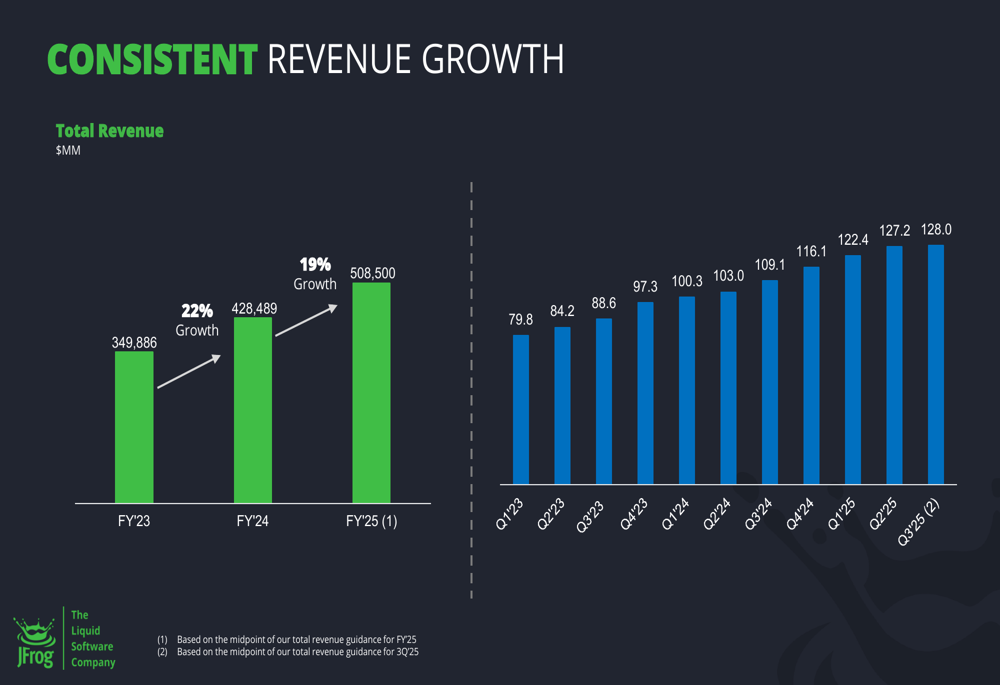
The company’s customer metrics also showed improvement, with the Net Dollar Retention Rate increasing to 118% in Q2 2025, up from 116% reported in Q1. This metric, which measures expansion within existing customers, indicates JFrog’s success in driving additional product adoption and usage. Meanwhile, the company maintained its impressive 97% Gross Dollar Retention Rate, demonstrating strong customer satisfaction and limited churn.
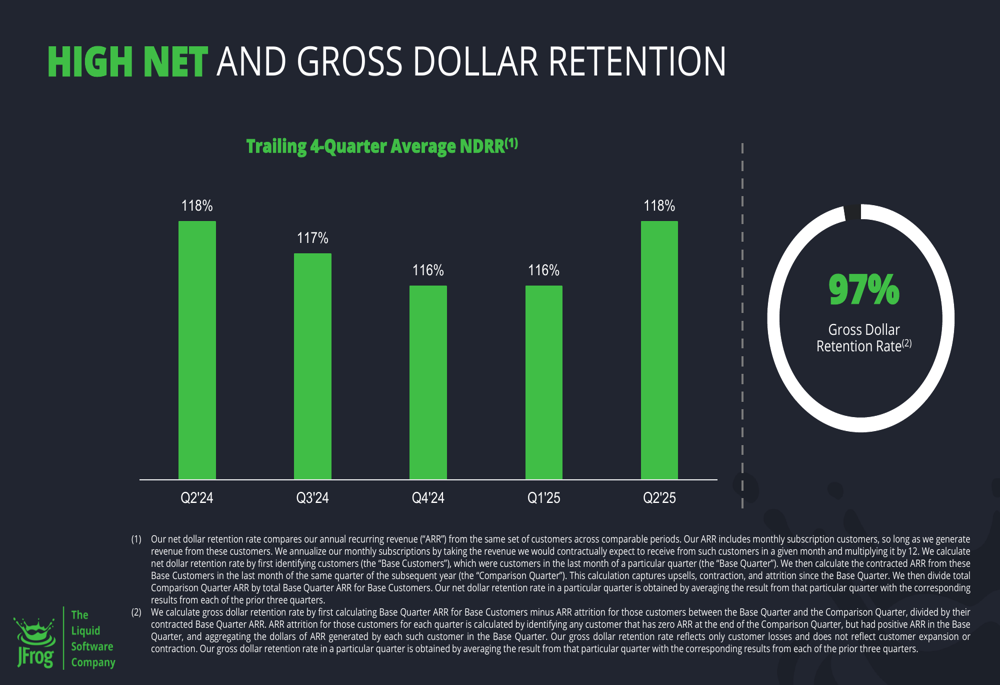
JFrog’s customer base now stands at 7,300, including 82% of Fortune 100 companies. The company generated $139 million in free cash flow on a trailing twelve-month basis, highlighting its strong cash generation capabilities alongside revenue growth.
Strategic Expansion into MLOps
A significant focus of JFrog’s presentation was its expansion into MLOps through the acquisition of Qwak. This strategic move positions JFrog to address the growing need for AI and machine learning model management within the software development lifecycle.
The company’s MLOps strategy aims to provide a unified platform for model hosting, security, and caching, addressing the prediction that "by 2027 over 90% of new software applications will contain ML Models or services." JFrog’s approach treats AI/ML model files as binaries that can be managed holistically across the software supply chain.
As illustrated in the following image, JFrog’s integration with Qwak provides end-to-end coverage of the ML development cycle:

This expansion aligns with comments from CEO Shlomi Benhaim in the Q1 earnings call, where he emphasized JFrog’s unique position as "the only platform offering DevOps, DevSecOps, and MLOps practices under one solution." The integration of Qwak appears to be a key element of this strategy, potentially opening new revenue streams as organizations increasingly incorporate AI/ML into their applications.
Land & Expand Strategy Driving Growth
JFrog’s presentation highlighted the effectiveness of its "Land & Expand" strategy, showing dramatic growth in annual recurring revenue (ARR) from initial customer engagements to multi-million dollar relationships. This approach has been particularly successful with Fortune 100 companies across various industries.
The following chart illustrates this expansion pattern with specific customer examples:
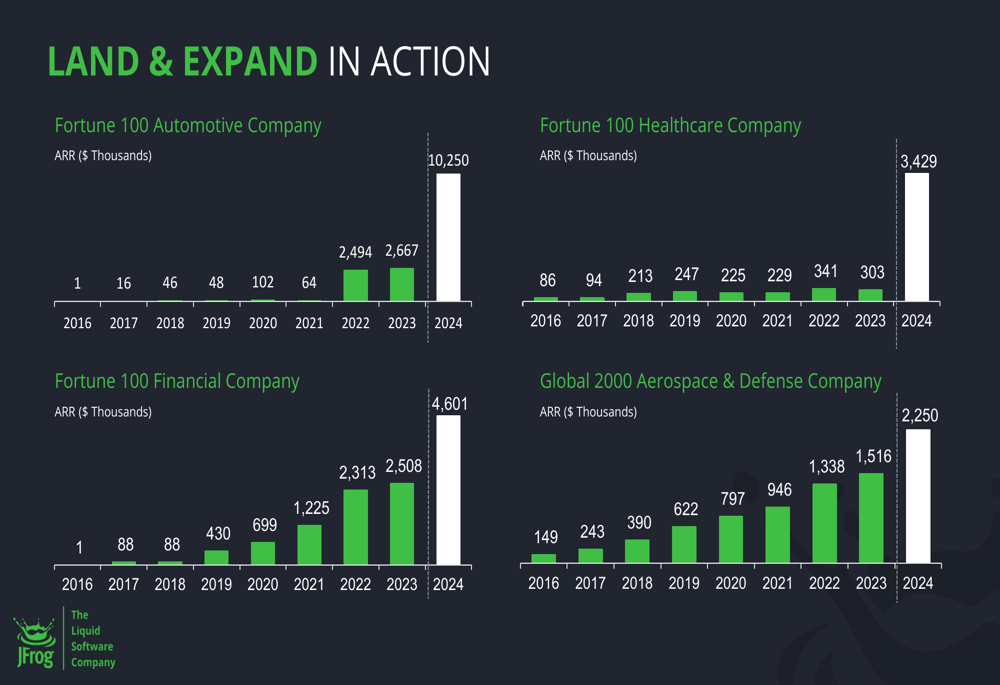
This strategy has resulted in 96.2% of JFrog’s customers adopting multiple products, with Enterprise Plus subscriptions now accounting for 55% of revenue in Q2 2025. The company’s ability to expand within existing accounts is further evidenced by the consistent growth of each customer cohort over time.
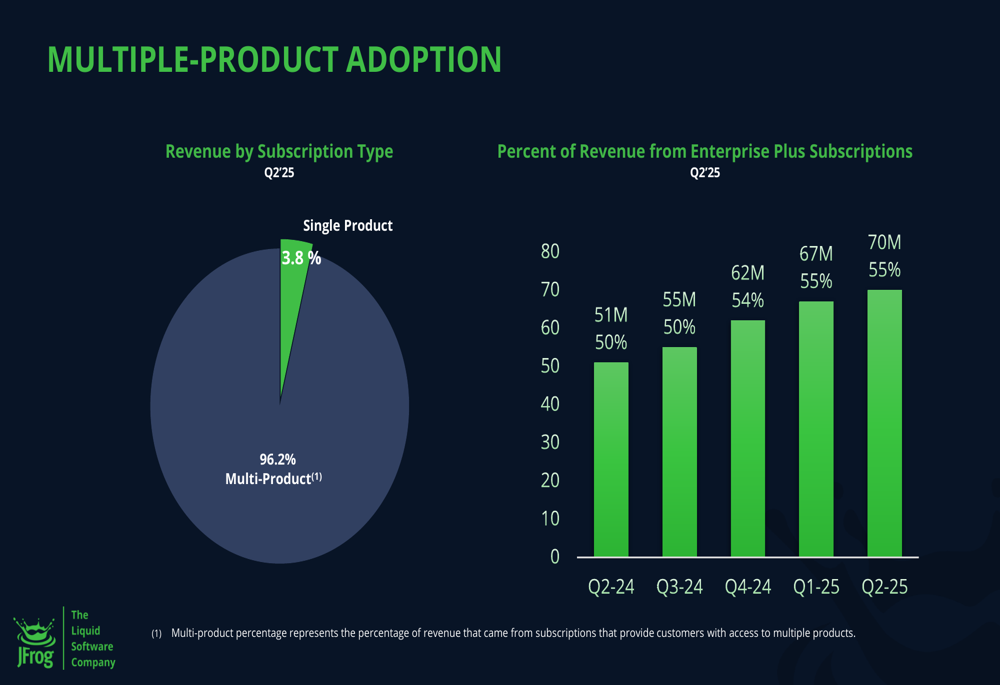
Competitive Positioning
JFrog positions itself as a differentiated platform in a competitive landscape that includes DevOps-focused vendors like GitHub and GitLab, cloud providers like AWS and Azure, and diversified vendors like IBM (NYSE:IBM) and Red Hat.
The company’s presentation outlined several key differentiators, including its ability to address enterprise-level complexity and scale, flexible deployment options, strong ecosystem integration, and universal package support. JFrog emphasizes its unique focus on binary management as a foundation for secure software delivery.
As shown in the following competitive positioning slide, JFrog highlights its differentiated platform capabilities:
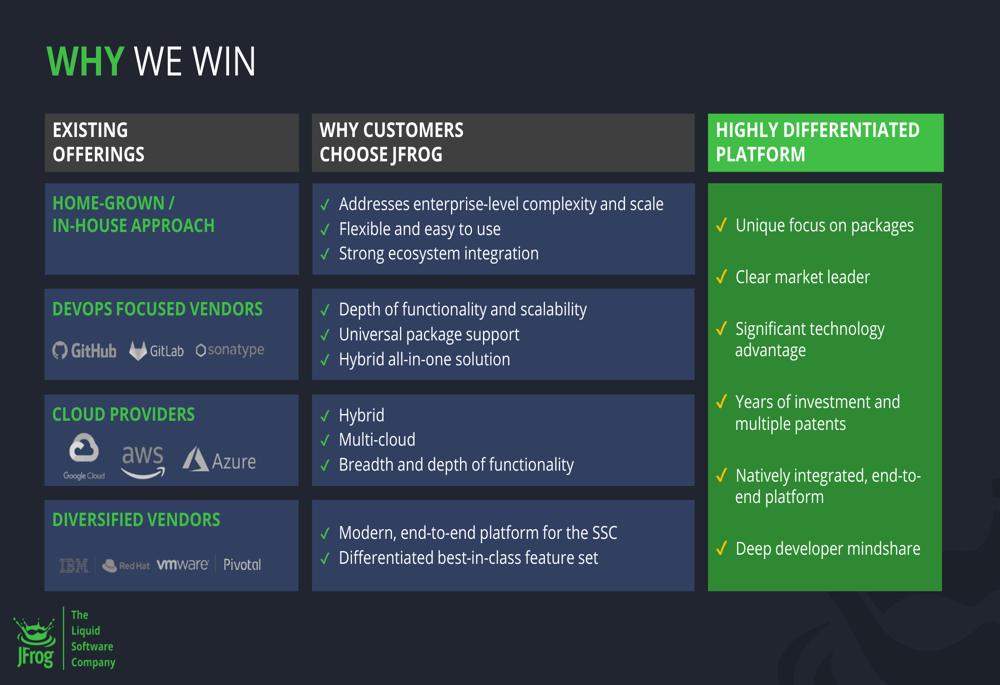
The company’s comprehensive software supply chain platform integrates multiple products to provide end-to-end coverage from development to deployment:
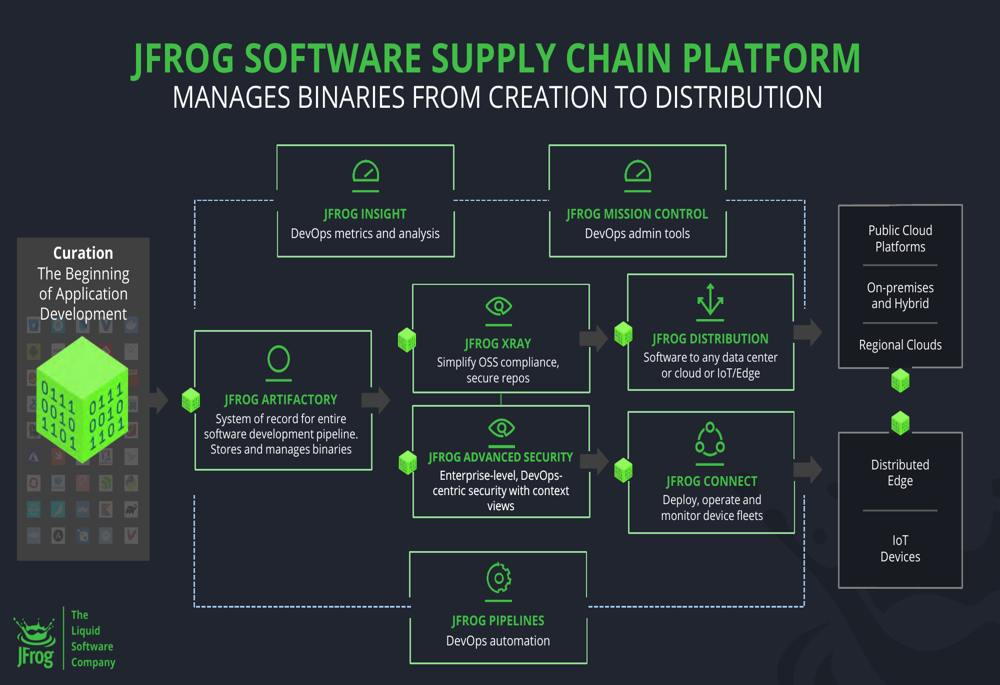
Long-Term Financial Targets
JFrog’s presentation included ambitious long-term financial targets, projecting revenue growth to $775-825 million by FY2027, representing a compound annual growth rate of approximately 20% from FY2024’s $428.5 million.
The company also expects to improve operating margins from 14.8% in FY2024 to 21-23% by FY2027, while maintaining strong free cash flow generation. These targets suggest JFrog anticipates continued strong execution of its growth strategy while also improving profitability.
The following table outlines JFrog’s long-term financial targets:
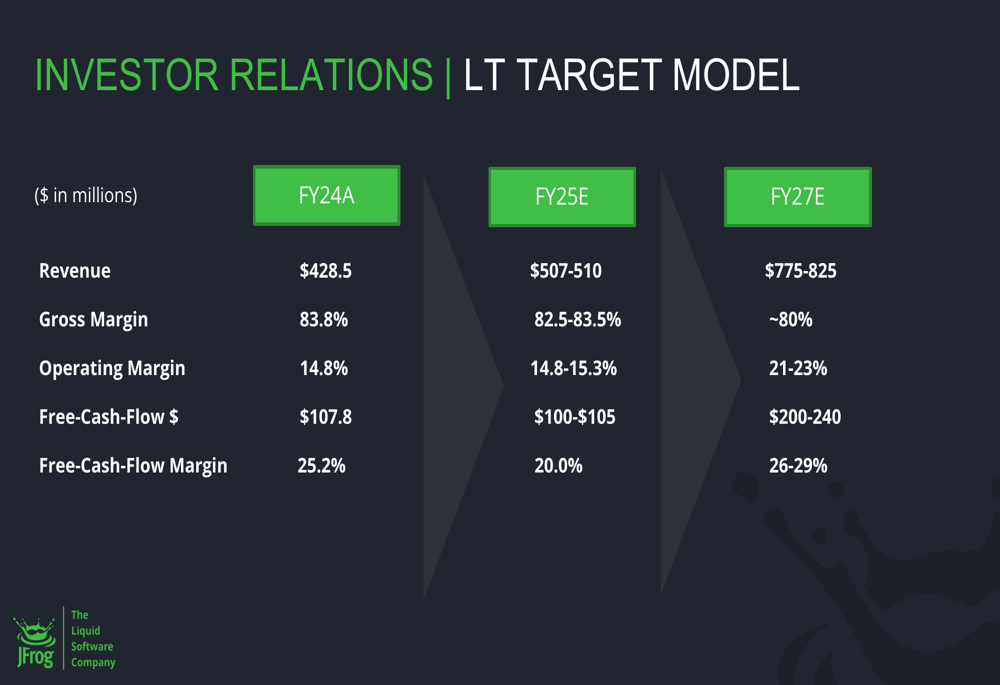
Conclusion
JFrog’s Q2 2025 presentation paints a picture of a company executing well on its core business while strategically expanding into new growth areas like MLOps. The company’s consistent revenue growth, high retention rates, and successful land-and-expand strategy provide a solid foundation for its ambitious long-term targets.
As summarized in the company’s concluding slide, JFrog is positioning itself as a category-defining software company with predictable growth and demonstrated leverage:
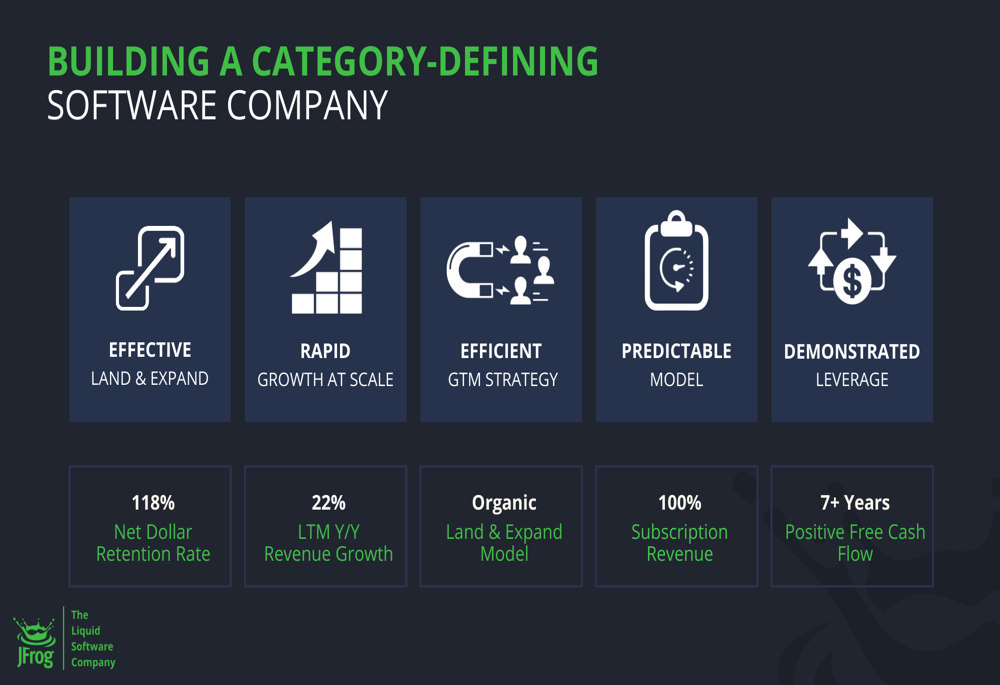
With the stock approaching its 52-week high following the earnings announcement, investors appear to be endorsing JFrog’s strategy and execution. The company’s expansion into MLOps through the Qwak acquisition represents a potentially significant growth driver as organizations increasingly incorporate AI and machine learning into their software development processes.
Full presentation:
This article was generated with the support of AI and reviewed by an editor. For more information see our T&C.
